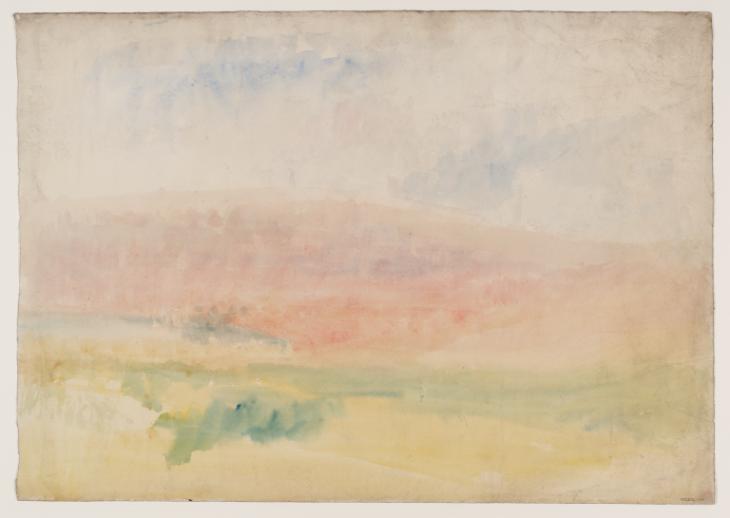This very loosely washed ‘colour beginning’, with its strong pinks and greens but little topographical detail, appears to have attracted little attention since Finberg described it as showing a ‘River, with distant castle on hill’.
1 However, Eric Shanes has plausibly suggested
2 that it may be a study for the 1816 watercolour
Leeds (Yale Center for British Art, New Haven),
3 a positive representation of the already heavily industrialised town sunlit in its broad valley with a skyline of hills beyond to the north. It was based on elaborate pencil drawings, probably made in September 1816 following a major Yorkshire tour, in the
Devonshire Rivers, No.3, and Wharfedale sketchbook. See in particular Tate
D09883 (Turner Bequest CXXXIV 79), under which the subject is discussed in detail, as is its unconfirmed connection with a revised edition of Dr Thomas Dunham Whitaker’s
Loidis and Elmete (Leeds and Wakefield 1816), which had included engravings of other local scenes after Turner. (A lithograph was issued in 1823, seemingly on the initiative of the watercolour’s owner; there is no Tate impression.)

